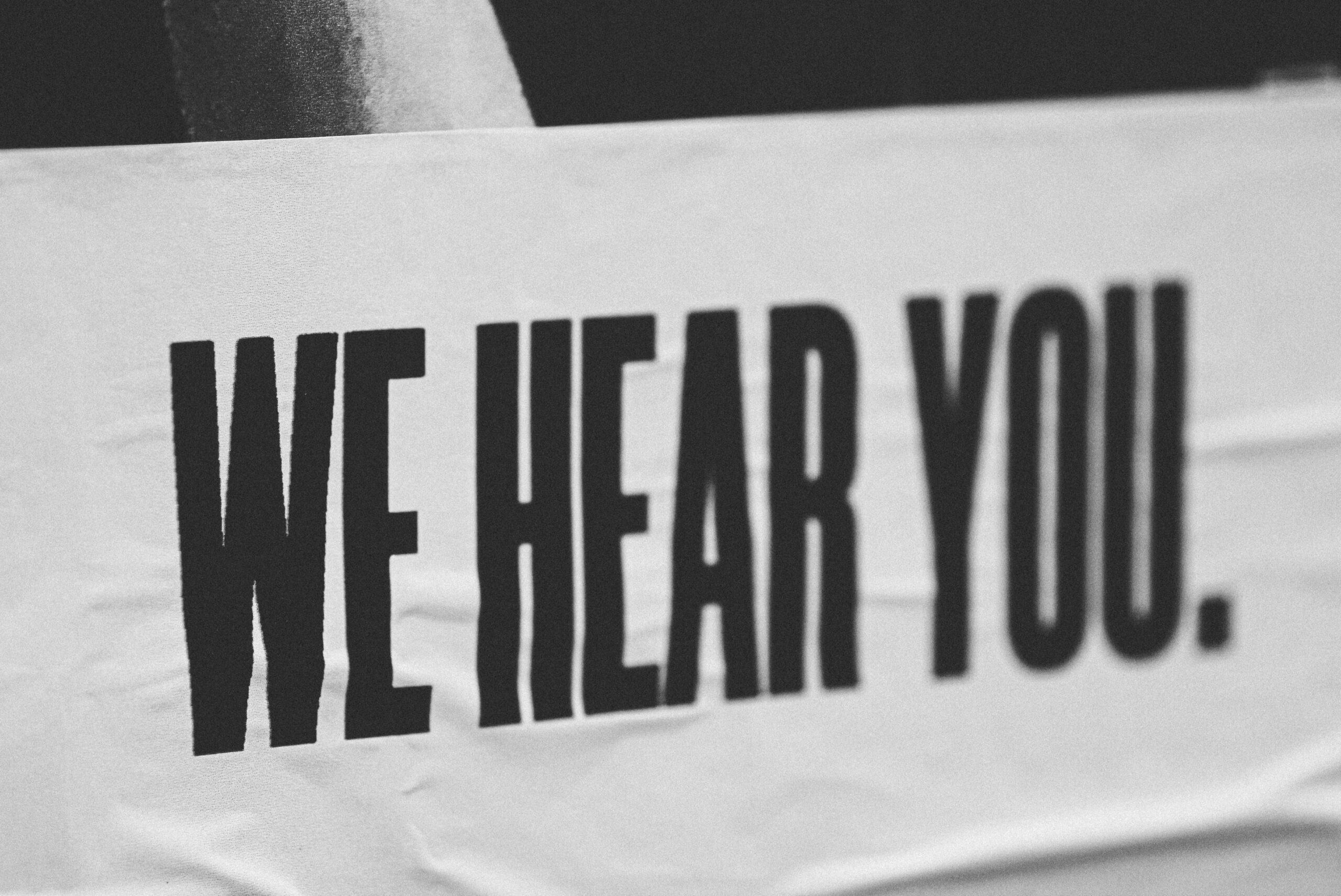
Emotional Intelligence, Well Being
How to Feel Your Feelings – The Simple Thing We Never Learn
Over the years I’ve heard the phrase, “You’ve got to feel your feelings,” so many times I could choke. It’s a popular phrase now, way extended beyond mere psychology and coaching circles. It’s almost as common as “living your best authentic life,” which also elicits an eye roll from me. How we hide from our feelings Feeling your feelings sounds simple, but most of us have no real understanding of how to do it. And the guidance out there on this front is hazy at best. A lot of this has to do with the fact that we don’t often have good role models on this front. I’m reminded of that 70’s musical classic, “Don’t cry out loud.” Words, unfortunately, that many of us have decided to live by. Furthermore, most of us think we are feeling the difficult emotions when they come up, but we’re really not. We’re fooling ourselves. This is because when difficult emotions do arise, the fight or fight mechanism gets triggered, our amygdala gets hijacked and rather than do the hard work of leaning into the actual feeling, we lean unconsciously instead into a coping mechanism, which could look something like one of the following options: So, what to do instead? The answer to how to feel your feelings lies is understanding what your default tendencies are and making a conscious choice to do something different. 2. Say yes to the emotion – Pat Rodegast (representing the teachings of Emmanuel) writes, “So walk with your heaviness, saying yes. Yes to the sadness, yes to the whispered longing. Yes to the fear. Love means setting aside walls, fences, and unlocking doors, and saying yes … one can be in paradise by simply saying yes to this moment.” The instant we agree to feel fear or vulnerability, greed or agitation, we are holding our life with an unconditionally friendly heart. We are accepting the present moment as it is. 3. Connect with the feeling in your body – Is it nervousness in the pit of your stomach? Is it anger and frustration in your forehead or shoulders? Is it sadness and grief that hangs heavy in your heart? Connect with the feeling in your body, lean into the experience of it and breathe deeply as you allow yourself to experience it. I find that once I’ve connected at this level the experience of the emotion typically passes rather quickly and it feels almost as if it’s moving through my body. 4. Show yourself loving compassion – I find it’s sometimes helpful to whisper out loud, “I’m feeling scared right now and it’s okay. I’m feeling resentful right now and it’s okay.” The trick here is to acknowledge what’s happening with loving compassion towards yourself, not to make the emotion go away. The only way it will go away is once you’ve accepted it fully and embrace the sensation. Coaching questions for thought: Shelley Pernot is a leadership coach who is passionate about helping her clients discover their
April 28, 2023
|
5 min read

Authenticity, Leadership
Being versus Doing – What is a leadership purpose statement and how do I create one?
In many of the leadership courses I teach, I talk a lot about the difference between the being and the doing of leadership. The doing is the day-to-day stuff we get caught up in. It’s the systems or process, tools or models that we look to for guidance. And being the task and accomplishment-oriented humans that we are, we often focus more on the doing side rather than the being. As a leadership trainer I often hear this question: “What do I do when I need to x?” X could be giving difficult feedback, a tough performance conversation, realigning expectations, inspiring and empowering my team to deliver, the list goes on and on. And there are several tools and techniques out there that give advice on what to do relative to these challenges. Tools and techniques are helpful and I’m not underestimating the value they can add. But a participant of mine summed it up very well the other day when she said: “There’s no checklist for leadership. And people can see straight through you when you’re just going through the motions.” She’s right by the way. People ultimately respond to who you are being in that moment versus what you are doing or saying. We have this uncanny knack to sense when someone’s intentions aren’t aligned with their actions, or they’re saying the so called “right” thing to manipulate or control. So the leadership coaching question for today is, Who do you want to be as a leader? Who do you want to be as a leader? I often have clients write a leadership purpose statement. A lot of times folks struggle with this, and I accept the fact that it can feel awkward. But I’ve often mused that a mindful life is an intentional life. So why should your leadership be any different? Step 1: What’s my personal purpose? One way to go about this is to have a think about your own personal purpose first. This includes questions like: Maybe there is something that ticks all these boxes for you, or maybe some of the above. There may be several things that you love, but you may not necessarily be able to prosper at them. Perhaps you honor that by pursuing a hobby or volunteering your time to a cause you are super passionate about. There’s no right or wrong way of responding to these prompts. The key is to have a think about them and see what comes up. See where you may be able to find the intersections. Step 2: What goals do I have for my leadership? And then link this to the act of leading by asking yourself: Once you’ve had a think, time to put pen to paper and create your leadership purpose statement. Maybe your statement looks something like this: “I’m excited to work on the challenges of climate change and that gives me a sense of personal purpose. I want to lead my team to innovate and tackle this challenge
April 20, 2023
|
4.2 min read

Emotional Intelligence, Leadership
A quick tip for maintaining your leadership presence: How to manage emotions under pressure
One of my participants asked the most brilliant question on a leadership training this week. We were talking about the importance of managing your emotional intelligence as a leader, which is so critical considering it’s the leader that sets the tone of a team. To the extent that the leader of a team shows up as frustrated or anxious, it creates a multiplier effect that spills over onto everyone else, and the problem is that your team isn’t going to do their best work in an environment like that. “I know it’s important to reflect. Meditation and journaling are helpful. Exercise is helpful. Sleep is important I know. But what do I do if say I’m in a meeting, and it’s tense. And I find my emotions getting triggered. Let’s say I get angry because the person I’m dealing with is inflexible and difficult. What can I do to manage my emotions then?” I love this question. And it brings up a great point. A lot of the stress management and emotional management techniques out there are aimed at what I call maintenance. Establishing healthy practices that enhance our overall quality of emotional well-being. And these are fantastic as they greatly reduce the overall probability that we will get triggered at an inopportune time. But we all have a bad day. We all have a bad moment. We’re human after all, and the human experience is full of emotions, some on the positive side, some on the painful and so called “negative” side. That’s the inherent duality of life. And no matter how subtle our reaction to something that triggers us, it still triggers us. Maybe we don’t say what we would really like to say or what we’re thinking in the moment – I’m scared, You’re wasting my time, You’re an idiot, I’m an idiot, This is stupid, but it still affects us and the quality of the interaction we are engaged in. We tense up, they tense up. We tune out, they tune out. Energetically something is going on, something is not being said, but tension hangs in the air, and you could cut it with a knife. So back to the amazing question. What do I do? The following practice is one that could be helpful. You can use aspects of it in the moment if you find yourself in a pinch, maybe you just utilize the pause step at that critical moment when you’re really triggered and you can also utilize it as a diagnostic tool to help build awareness. How to manage emotions in a difficult situation – a 3 step process Pause – Take a couple of deep breaths. If you’re in a meeting no one has to know. If it’s appropriate you might excuse yourself for a minute or two. Then ask yourself a question or two: Whatever the feeling is, it’s valid. Just acknowledge it. There’s no need to blame or shame yourself for feeling whatever is coming up. You might tell
April 13, 2023
|
4.8 min read

Change, Leadership
A Quick Tip for Handling Change – You Can’t Navigate What You Don’t Acknowledge
Last weekend I attended a meditation retreat, which was uneventful. A lot of sitting on a bumpy meditation mat. But it was a much-welcomed opportunity to slow down and reconnect with myself, particularly as I’ve been running hard the past few months. I soldered on and struggled through several hours of sitting meditation, walking meditation and lecture on the four aspects on mindfulness. I left thinking it was somewhat useful but probably not the most effective use of my time. A few days after the retreat, I was down in the dumps. Thursday of last week I walked around in a sad fog, it was almost as if a large heavy cloud had descended upon my head and was raining down on me wherever I went. I thought it was particularly odd considering nothing had really happened to cause it. Or so I thought. Then I remembered what my friend Michelle had said when I mentioned I’d be going to the retreat – “Wow, a meditation retreat. It will be interesting to notice what comes up for you in the week or so after. These things are so powerful!” Were the two things connected I wondered? Indeed they were. And then a realization hit me like a ton of bricks. The immense amount of change I’m currently going through but hadn’t thought to acknowledge or show myself any tenderness or compassion for. Change is an interesting thing. It can often creep up on a person, where we don’t even recognize we’re experiencing it. I’ve seen this many times with my clients. They solider on bravely and stoically, through job changes – maybe a career transition or a layoff, changes in living arrangements, changes in relationship status. There is no escape from the universal human change curve There is a way that humans tend to experience change, and it’s called the change curve. It often looks something like this: This model was developed in the 1960’s by Elizabeth Kubler Ross and if you look closely enough, you’ll notice that it tends to follow the grieving process. This model underscores the journey of change every human goes on, whether we consciously realize it or not. And when you think about this, it makes perfect sense. Change means the death of something old and the birth of something new. And it will be stressful and chaotic, even if the change was a wanted change, which in my situation it was. My husband decided to take a sabbatical and spend some much-needed time determining whether he wanted to make it permanent and retire early or go back to work. He’ll still not sure. And I’ve been super supportive considering he traveled a lot for his job and was away over half of the time we’ve been together. The first six months were great. A joyous time for us to have fun together and do all sorts of things that had been put on the back burner for years. And then the reality of the
March 30, 2023
|
5.2 min read

Emotional Intelligence, Leadership
It’s true you can’t always get what you want (but what you need is probably way more important…)
I was thinking about the journey of learning the other day, as I’m getting ready to start another course on leadership for a cadre of participants. It’s an unusual course, as it allows a lot more time for unconventional mindfulness practices and self-reflection. And I was thinking of what I would say to kick it off, as getting participants to buy-in to such unorthodox methods isn’t always an easy sell. Give me the formula In our fast-paced world we’re used to impatience, and we need the answers, and we needed them yesterday. We want to be handed the content, the checklist, the model, or technique and then we want to know exactly how to apply it. We have a “people problem” and we need it solved. “Tell me what to say. Tell me what to do. This is a difficult person. I need to know the exact words to say to get them to do what I want.” But the interesting thing is life just doesn’t work that way. Unfortunately, there’s not a model or a checklist for every possible thing that could happen and often in these types of situations we need to look within first and ask ourselves a few questions… Learning and growth is often messy Real growth and learning is often messy and can require us to lean into things that are frankly just uncomfortable. I often mention this to potential coaching clients. The path to growth is not an easy one, and it’s not linear. Some days you might feel like you’ve taken two steps forward, and some days it might be a step back. Development is a messy, messy business. This reminds me of a situation many years ago when I went on sabbatical. I talk about this in my book. I was strung out, burnt out, and even more than that, disillusioned with life and the direction I was headed. I was stuck in a job I never wanted and didn’t like, and I had ticked all the proverbial boxes and yet was miserably unfulfilled. Learning and growth comes to those willing to stay open I went on sabbatical because I figured I needed some time out (which I did) and figured I’d distract myself with yoga teacher training. In the end, the teaching of yoga was probably the least important thing I learned. Don’t get me wrong, it was helpful. But I learned something far greater than that, and something quite unexpected. I started the long and arduous journey of practicing compassion for myself. The long and arduous ride of stepping into my real power, because that’s what happens when you can accept every aspect of yourself. And what a ride it’s been. When I returned from my sabbatical, I sat down with my beloved boss Timothy, a boss who recognized the importance of self-discovery and gave me the space to start the journey for myself. It took me forever to work up the courage to ask him for permission to go,
March 23, 2023
|
4.4 min read

Communication, Emotional Intelligence, Leadership
The (more subtle than we realize) Art of Listening
Recently I was helping facilitate a program on coaching for leaders, and on day 1 we spent quite a bit on time on the subject of listening. You may wonder why, considering it’s something we do every day and most of us think we’re more than competent when it comes to this skill. Think again. “This is hard!” “I keep wanting to butt in and offer my thoughts or advice.” I so appreciated the honesty and vulnerability from the participants. The bottom line is that most of us are average at best when it comes to this skill. And the problem is if you’re a leader looking to inspire and motivate your team to greatness, average just won’t cut it. This reminds me of a story from many years ago. I was speaking with someone who was known in the organization I was working for at the time to be a great leader. A fantastic reputation, the kind of person people sought out to join their team. So I asked this individual, what’s your secret. I was expecting something magnanimous, something I’d never thought of before. Some simple but not easy advice on listening The response caught me by surprise. “I give whatever or whomever is in front of me 100% of my attention.” I was underwhelmed to say the least. But they were really on to something. Because the reality of how we show up is often quite different. Let’s take the following scenario: Someone pokes their head in your office – “Do you have a minute?” They ask. “Sure!” you say, wanting to sound interested and helpful. You’re the boss that cares. You’re approachable. People like you. They walk in and your eyes are still on the email you were in the middle of writing. Your thoughts are still halfway consumed by it. You’re unaware you’re doing this. You’re halfway listening to what they’re expressing. You’re nodding your head in agreement, eager to get back to your draft. They leave and you carry on, you barely notice the interaction and later you forget all about it until they awkwardly remind you of what you’d agreed to in that moment. Listening isn’t an innate thing we can take for granted. It’s a skill. And just like any skill there is a methodology to it and we must practice it. The levels of Listening Level 1 – Halfway listening. In the previous example the manager I mentioned was listening at the equivalent of level 1. They’re halfway there, they’re caught up in their head in something else. They really didn’t have the time for the interaction but instead of setting a boundary and asking the person to please come back later, they acquiesce. The result is they’re not present, they’re not tuned in, and the person on the receiving end of the conversation knows it. The employee with the question leaves disengaged and slightly annoyed. People know when they’re not being listened to. Another version of level 1 is what
March 16, 2023
|
5.4 min read
Ask Ms. Mindfulness
Shelley Pernot, otherwise known as the Irreverent Guru of Mindfulness, muses on life, leadership and everything in between. Your one stop shop for career tips, leadership tips and daily inspiration!

It was a privilege to work with Shelley as my leadership coach! The process was structured and yet flexible enough to meet needs as they arose. Shelley helped me to grow, learn more about myself, and to really achieve what I set out to accomplish. We worked on planning, navigating a promotion successfully, and so much more! I experienced many successes as a result of working with Shelley, she has great resources, knowledge, and really helps with setting the foundation to this coaching work. She won’t let you down!
Stacy Campos
Regional Coordinator
Having the opportunity to have Shelley as my Leadership Coach could not have come at a better time in my career. I was recently promoted to CFO and was new to the Senior Management Team. Shelley helped me navigate joining the team as well as helped me to determine who I wanted to be as a leader. The Leadership Circle Profile helped our team to discover our blinds spots and to be able to understand each other better. Working with Shelley not only has affected my professional life in a positive way, but also my personal life. She helped me take leaps and has given me the resources to continue this journey of self-improvement. If you’re looking to find more about yourself and how you can be the best version of yourself, I highly recommend working with Shelley.
Kristen Spedale
CFO
I have been working with Shelley for the past 2 years on my leadership development journey. What I thought would be a straight line, I soon learned with Shelley’s guidance, was a winding path with several ups and downs along the way. Shelley supported me as I took a deep dive into my professional and personal history and learned how it affects my approach and my perceptions. She helped me to slow down and recognize certain behaviors and understand that I can pivot in the moment or try again next time. Ultimately, my work with Shelley turned out to be so much more than what I expected. Her approach to coaching was exactly what I needed.
Nicole Naassan
Senior Vice President, Consulting
I’ve learned more about leadership in the past six months working with Shelley than I have in my 10+ year career. She is an incredible coach with many tools in her toolbox. The guidance and mentorship I’ve received from Shelley has been life-changing. She will challenge your limiting beliefs and inspire new ways of thinking.
Margaret Soltis
Creative Director
I highly recommend Shelley if you need a coach, thought partner, and guide as you consider the next steps in your career. She provides practical tools and advice to help launch your career exploration, but most importantly, she is an expert at helping you cut through the noise of your limiting beliefs. At the end of our time together, I had a much clearer vision of what I wanted in my life and a plan to make it happen. My only regret is that I didn’t find her sooner!
Elizabeth Magnus
My career coaching sessions with Shelley have brought me back to living. It’s been contagious, spreading throughout my personal and professional life. I now have the building blocks I need to continue setting healthy boundaries, the freedom to show up as my authentic self, and an adaption of a growth mindset that has allowed me to make bold decisions and try new things. I’ve discovered that there’s always another way and how to eradicate barriers that lead to tunnel vision. These sessions with Shelley have been a great gift and have given me the momentum I need to continue the journey to be my best self.
Teasha Houston
Art Director
It is amazing to think where I was only 10 months ago when I first started working with Shelley and where I am now. Not only professionally but mentally and emotionally. Shelley helped me navigate out of an unhealthy work environment by challenging me and asking me those tough questions we never seem to ask ourselves. What are the values of a true leader? How do those values align with my own? Shelley challenging me and guiding me through some of those tough questions is what led to my epiphany and me having the courage and confidence to leave an environment that threatened my well-being. She taught me how to become more self-aware and self-compassionate. Reminded me to be kind even when the world would understand if I did otherwise. And the biggest one for me, shutting down that crazy inner voice (we all have it!) and replacing it with being present. Shelley has armed me with tools that I will carry with me for a lifetime. Tools that will help me to continue to grow and learn. Life can be hard but working with someone like Shelley does make it easier. She will help you navigate the good and the bad and you’ll learn so much about yourself in the process.
Michele Feria
Director of Marketing
First of all I would like to say that I would recommend Shelley to anyone needing career guidance. As my counselor Shelley helped me transition my career from bartending to Tech Sales which was a difficult and scary transition for me. From the start Shelley was fantastic. Initially I had no idea of which direction I wanted my career to go, I just knew I wanted it to go somewhere else. Shelley was so kind and patient as she helped me figure this out, and gave me a step by step guide on how to explore my options and make an educated decision. She also helped me assess my skill set which played a large part in directing my energy. I landed a great job within days of my final session with Shelley, and now I’m month 3 I am absolutely loving it and doing very well. It was the perfect job for me and Shelley was the one that got me there. Working with Shelley was one of the best decisions I have ever made, she literally changed my life and I am so much happier for it.
Russell Boxer
Account Executive
